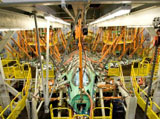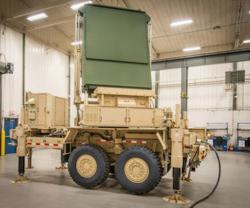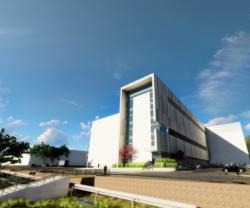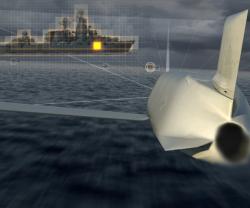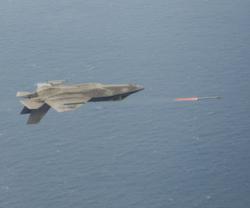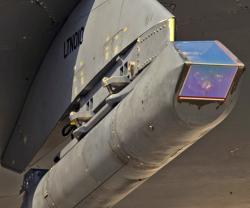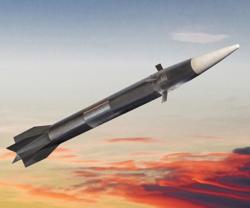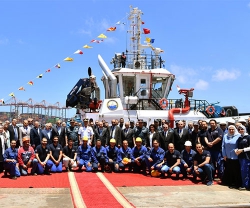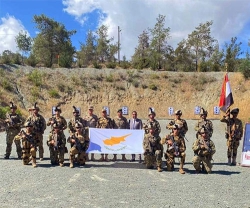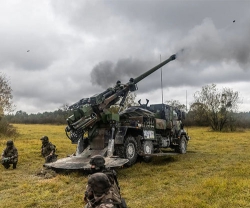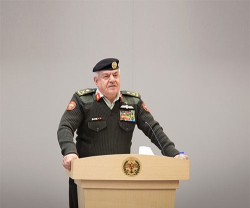F-35 Program Completes Static Structural Testing
20.09.2011 North America
Lockheed Martin’s F-35 program has successfully completed static structural testing, achieving one of five milestones established by the Joint Program Office for 2011.
Static structural testing is used to verify the structural integrity of the airframe and to ensure specifications outlined in technical drawings used to produce the aircraft are accurate. Engineering teams at Lockheed Martin, BAE Systems, Northrop Grumman and the Joint Program Office conducted the tests over the past two years.
In static structural testing, external loads designed to simulate the pressures of full envelope flight conditions are applied to hundreds of points on the airframe using an integrated system of load pads, hydraulic actuators, air pressurization mechanisms and reaction channels.
As proof that the airframe is capable of withstanding the pressures associated with the full flight envelope, engineers tested the structure to 115% of requirements and confirmed that no detrimental deformation of the structure occurred. In the final phase of static structural testing, the airframe was pushed to 150% of requirements to verify that there was no rupturing or structural failure.
“As one of our major program milestones, the completion of static structural testing demonstrates the significant progress that we’re making on our joint mission to field this 5th Generation air combat capability,” said Larry Lawson, Executive Vice President and General Manager of the F-35 program. “These successful tests bring us one step closer to delivering the F-35 into the hands of the men and women of our U.S. and allied forces."
Bob Burt, Director of F-35 Structures Development added, “This is a significant accomplishment for the F-35 program. Working together with our partners at BAE Systems, Northrop Grumman and the Joint Program Office, we successfully completed the static structural testing ahead of schedule."
The F-35 Lightning II is a 5th Generation fighter, combining advanced stealth with fighter speed and agility, fully fused sensor information, network-enabled operations, advanced sustainment, and lower operational and support costs. Lockheed Martin is developing the F-35 with its principal industrial partners, Northrop Grumman, and BAE Systems.
Static structural testing is used to verify the structural integrity of the airframe and to ensure specifications outlined in technical drawings used to produce the aircraft are accurate. Engineering teams at Lockheed Martin, BAE Systems, Northrop Grumman and the Joint Program Office conducted the tests over the past two years.
In static structural testing, external loads designed to simulate the pressures of full envelope flight conditions are applied to hundreds of points on the airframe using an integrated system of load pads, hydraulic actuators, air pressurization mechanisms and reaction channels.
As proof that the airframe is capable of withstanding the pressures associated with the full flight envelope, engineers tested the structure to 115% of requirements and confirmed that no detrimental deformation of the structure occurred. In the final phase of static structural testing, the airframe was pushed to 150% of requirements to verify that there was no rupturing or structural failure.
“As one of our major program milestones, the completion of static structural testing demonstrates the significant progress that we’re making on our joint mission to field this 5th Generation air combat capability,” said Larry Lawson, Executive Vice President and General Manager of the F-35 program. “These successful tests bring us one step closer to delivering the F-35 into the hands of the men and women of our U.S. and allied forces."
Bob Burt, Director of F-35 Structures Development added, “This is a significant accomplishment for the F-35 program. Working together with our partners at BAE Systems, Northrop Grumman and the Joint Program Office, we successfully completed the static structural testing ahead of schedule."
The F-35 Lightning II is a 5th Generation fighter, combining advanced stealth with fighter speed and agility, fully fused sensor information, network-enabled operations, advanced sustainment, and lower operational and support costs. Lockheed Martin is developing the F-35 with its principal industrial partners, Northrop Grumman, and BAE Systems.
Previous PostATK Wins Order for Non-Standard Ammunition (NSA)
Latest news
Latest events
Paris Air Show
16 - 22 Jun 2025Paris Le Bourget - FranceDefenPol China2025 - 7th Guangzhou International Defense & Police Exhibition & Summit
11 - 12 Jul 2025Nan Fung International Convention & Exhibition Center (NICEC) - ChinaIDEF 2025 Turkey - International Defence Industry Fair
22 - 27 Jul 2025Istanbul Expo Center - TurkeyDSEI 2025
09 - 12 Sep 2025Excel, London - United Kingdom

